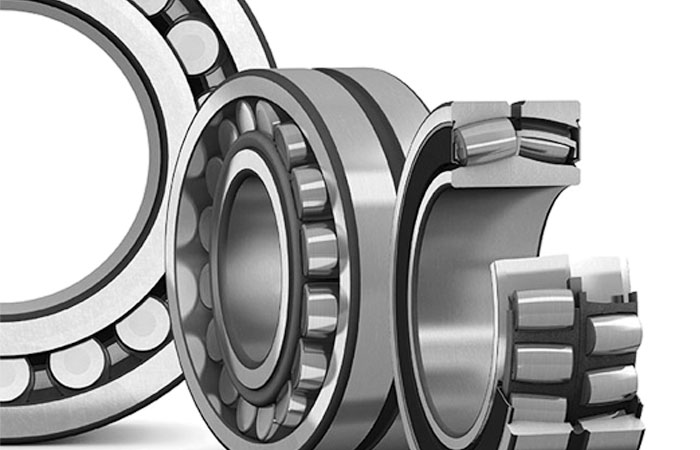Bearings are crucial components in many machines, enabling rotational or linear movement while reducing friction and handling stress. When bearings fail, it can lead to severe consequences, including equipment downtime, increased maintenance costs, and even catastrophic failures. Understanding the root causes of bearing failure and implementing appropriate remedies is vital for maintaining the reliability and longevity of machinery.
Common Causes of Bearing Failure
Inadequate Lubrication
Cause:
Insufficient lubrication is one of the leading causes of bearing failure. It can occur due to using the wrong type of lubricant, contamination of the lubricant, or simply not having enough lubricant.
Symptoms:
Overheating, discoloration of bearing surfaces, and excessive wear.
Remedy:
Ensure proper lubrication by using the correct type and amount of lubricant. Regularly monitor and replace lubricants to avoid contamination.
Contamination
Cause:
Contaminants such as dirt, dust, water, and chemicals can enter the bearing housing, leading to premature wear and failure.
Symptoms:
Surface damage, scratches, and pitting on the bearing raceways and rolling elements.
Remedy:
Implement proper sealing solutions, maintain a clean working environment, and regularly inspect and clean the bearing and surrounding areas.
Overloading
Cause:
Bearings are designed to handle specific load capacities. Excessive loads, whether static or dynamic, can lead to deformation and premature failure.
Symptoms:
Indentation marks, spalling, and fatigue cracks.
Remedy:
Ensure bearings are properly sized for the application and avoid overloading the system. Consider redesigning the bearing system if necessary.
Misalignment
Cause:
Misalignment occurs when the bearing and the shaft are not properly aligned. This can be due to improper installation or structural issues.
Symptoms:
Uneven wear patterns, excessive vibration, and noise.
Remedy:
Use precise installation techniques and tools to ensure proper alignment. Regularly inspect and adjust alignment as needed.
Improper Handling and Installation
Cause:
Bearings are delicate components that require careful handling. Improper installation techniques or physical damage during handling can lead to failure.
Symptoms:
Physical damage, brinelling, and premature wear.
Remedy:
Follow proper handling and installation procedures, use the right tools, and train personnel on best practices.
Fatigue
Cause:
Bearings subjected to repeated stress cycles can develop fatigue over time. This is a natural wear process but can be accelerated by other factors like poor lubrication and contamination.
Symptoms:
Flaking, spalling, and cracking.
Remedy:
Use bearings with higher fatigue resistance for high-stress applications. Regularly monitor bearing condition and replace them before they reach the end of their fatigue life.
Electric Arcing
Cause:
Electrical currents passing through the bearing can cause arcing, leading to surface damage.
Symptoms:
Craters, fluting, and surface burns.
Remedy:
Use insulated bearings or grounding solutions to prevent electrical currents from passing through the bearings.
Diagnosing Bearing Failures
To determine the root cause of a bearing failure, follow these steps:
Visual Inspection:
Examine the bearing for visible signs of wear, damage, and contamination.
Look for discoloration, scratches, cracks, and unusual wear patterns.
Operational History Review:
Check maintenance records for lubrication schedules, previous issues, and load history.
Identify any recent changes in operating conditions or procedures.
Lubricant Analysis:
Test the lubricant for contamination, viscosity, and chemical composition.
Look for signs of degradation or the presence of foreign particles.
Vibration Analysis:
Monitor the vibration levels of the bearing and surrounding components.
Identify any unusual or excessive vibrations that could indicate misalignment or imbalance.
Dimensional Inspection:
Measure the bearing dimensions and compare them to the manufacturer’s specifications.
Check for signs of deformation or wear.
Microscopic Examination:
Use microscopes to examine the bearing surfaces for fine cracks, pitting, or other microscopic damage.
Identify patterns that could indicate specific types of failure mechanisms.
Remedies and Preventive Measures
Regular Maintenance:
Establish and follow a comprehensive maintenance schedule.
Regularly inspect bearings, lubricate them properly, and replace them as needed.
Proper Lubrication:
Use the right type and amount of lubricant for each application.
Monitor lubricant condition and replace it at appropriate intervals.
Contamination Control:
Implement effective sealing solutions to keep contaminants out.
Maintain a clean working environment and use clean tools and equipment.
Correct Installation:
Use appropriate tools and techniques for bearing installation.
Train personnel on proper handling and installation procedures.
Load Management:
Ensure bearings are correctly sized and rated for their loads.
Avoid excessive loads and distribute loads evenly when possible.
Alignment and Balancing:
Ensure components are properly aligned during installation and operation.
Regularly check and adjust alignment and balance to prevent uneven wear.
Electrical Isolation:
Use insulated bearings or grounding techniques to prevent electrical arcing.
Ensure proper grounding of electrical equipment.
Conclusion
Bearing failures can be prevented with proper understanding, maintenance, and operational practices. By identifying the root causes of bearing failures and implementing the appropriate remedies, you can significantly extend the life of your bearings and improve the reliability of your machinery.
Regular monitoring, timely maintenance, and adherence to best practices are key to preventing bearing failures and ensuring smooth and efficient operation of your equipment.



